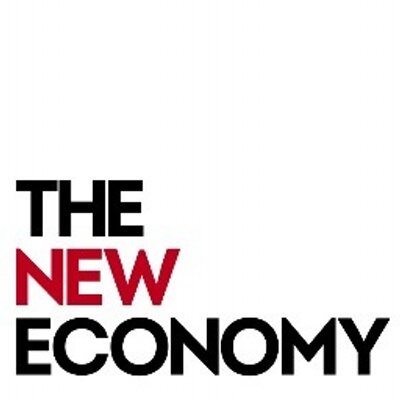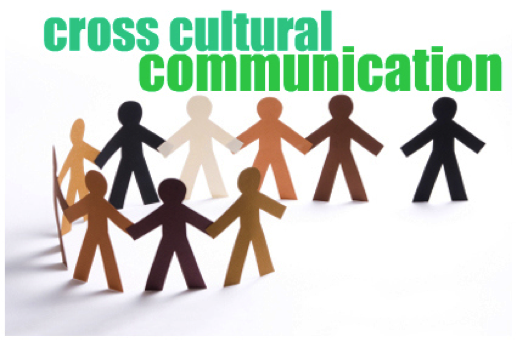Global Business Environment
New Economy and New Culture
Moving towards a New Economy. Traditionally an economy was defined in terms of deciding factors influencing the distribution of limited and scarce resource among the competing forces in highly competitive environment. The scope of the subject was limited to efficient performance of production processes. The agenda of fairness has been rarely incorporated in the economic system.
Economic theories were not contributing enough to resolve the economic and practical problems. Freedom of mind lost its connection with reality and introduced hypothetical theories to resolve the economic issues prevalent in the environment. These theoretical frameworks present comprehensive and ample method of evaluating the individual behaviors but at same time produce variety of testable issues which demand extensive and profound scrutiny.
Behaviors of individuals are examined and analyzed by numerous economic endeavors and economic agents. It is very difficult to define culture as it implies numerous meanings, transformed into various aspects without any mutually agreed definition.
Culture is associated with the subject of humanities and social sciences and its meaning varies widely across disciplines. It ascribed different meanings in different centuries and the most recent one focused on the intellectual development of entire civilization and entire lifestyles of individuals which supplement the cultural values. Culture is social frame work which defines the attitudes, beliefs, norms values shared by large group. The main objective of relating economy with cultural dimensions is to investigate the role of cultural instruments in economic development and economic performance of the society (Throsby, 2001).
New Economy and New Culture
Some of the extremists believed that new economy would be free of all the inflationary problems which would lead to recession or economic downturn because of technological development. According to (Wired, 1998) new economy would evolve with the help of technological change, globalization in the economy and skills and creativity of individuals in the society.
Development in information technology would largely impact the work in production industry. Technological change is revolutionary change which enhances the workers ability and skills and affects the social choices of individuals (Zuboff, 1988).
Globalization would narrow down the geographical boundaries and expand the market across the borders and scope of the new economy would be globalized. This globalization would redesign the rules of competitiveness in the economy. It has differential effect in the society and has enabled to achieve free market mechanism against protectionism (Brink Lindsey, 2001).
The effect of globalization has also deprived local culture from its unique cultural factors. So the cultural factors have also evolved along with the economy because of dramatic changes in the world. New economy demands completely new skill set among workers. Ne economy values creativity and innovation of the individuals to compete in global market.
New economy capitalizes on the value of intangible assets and provide dynamic and information rich environment for operation to its workers. (Malone, 1999) New economy has produced heterogeneity and flexibility in cultural instruments of the society and has established unique relationship between culture and economy. Contribution of creative sector in the economy has highlighted that the problems of cultural policy are almost the same as problems of economic policy.
New economy is described as global, networked and information rich economy with creative and innovative workforce. It generates niche- marketed goods and services staffed by intelligent and culturally rich workers and satisfy the creative and cultural needs of individuals. Cultural needs of individuals evolve with the growth in creative sector of the society (Healy, 2002).
The focus of cultural values has shifted from direct economic contributions produced by creative industries towards indirect economic benefits like creativity and innovation, employability and social inclusion. Social and cultural values, capital and human characteristics are highly considered factors in the formulation of cultural policy which is associated with the economic policy (Böhm & Land, 2009).
Development in the work life and labor markets demands the understanding of motivational factors of workers. Creativity and innovation has generated new appeal for culture in the new economy. Cultural context of economics can be easily explained as economic agents observe and breather in the cultural environment which regulates their behaviors and outline their preferences. Cultural economy helps to scrutinize the social and economic dimensions of the society.
Contemporary Business and Economy
Evolution in the economy and international standards have created intimidating business environment for several multinational companies and their brands operating globally. Newly evolved business environment poses challenges of economic downturn, high cultural sensitivity because of cultural shifts in the society, lack of motivation and job satisfaction among the workforce and corporate scandals leading to lack of trust in capital markets.
These challenges are attributed to globalization of market, development in information and technology and diversity in the workforce. Organizations operating in this highly unpredictable working environment are struggling to restore their trust in the corporate world. Some organizations are trying to regain their position in this hostile environment by setting ethical standards, strict rules, establishing transparent processes, addressing public concerns, performing cultural audits and by establishing social challenging performance targets. All these efforts pave path towards the formation of new economy and new culture collectively described as cultural economy (Goodman, 2004).
Organizations in contemporary business environment are highly susceptible to social, cultural and moral issues of the society. Changes in the operating environment of businesses largely sway the skill requirement of businesses.
Business organizations are adapting and transforming their operating activities according to the cultural, social and moral standards of the society. This transformation largely influences the competitive position of the business in competitive landscape. It also helps in developing positive image and repute of the business in the society.
Change agents like economic environment, technology and globalization have forced the organizations to capitalize on the cultural economy in order to adapt and perform landmark success in their industry. Implications of contemporary issues raised by the environment could be easily modified and capitalized by balancing their business environment with new economy and new culture (Crane & Matten, 2010.).
Importance of New Economy and New Culture
Cultural processes and values adapt to material environment. The role of culture in the economic development of third world countries could be effective by identifying their cultural integrity and cultural aspirations of poor people and improving their material circumstances according to their cultural traditions. Development of culture and economic circumstances are intertwined in the society.
Development projects introduced by NGOs in under developing countries for raising their living standards and economic conditions largely depend on the understanding of their cultural traditions. This explained that culture determines the scope of material process in economic context (Throsby, 2001). The driving force in international market is culture and creativity. The impact of culture is evident not only to the economy but also to their society. Increase importance of culture in economy and society has transformed the way of creation, consumption and enjoying cultural products.
Culture is not only significant mean towards economic growth but also fundamental factor in social cohesion and development of human civilization. Cultural industries deal with the conception, production and commercialization of creative products which have social and economic importance in the market.
From 1999 to 2003, growth in cultural and creative industry in European Union was 12.3% more than economic growth. In 2004 cultural sector employed 5.8 million people in Europe. Moreover the jobs created by cultural and creative sector provide sense of assurance and commitment, job involvement and satisfaction to their workers.
Cultural industries contribute towards enhancing the economic performance of the countries. The Great Wall of China as cultural heritage is source of tourist income and attracts national investment. It enhances the value of the brand of the national products and mobilizes the economy. This example illustrated the economic and social contribution of culture in the society (Pol, 2007).
The concept of knowledge-based economy provides economic support to creativity and talent and emphasizes on the framework of cultural growth and development. Traditional production factors have evolved and change in the new economy. Key underlying factors of social and economic growth are knowledge, creativity, innovation and skills. It has not only changed the economic structure but revolutionized the development of economy and society.
Economic growth and development largely relies on the application new ideas and creativity in the cohesive economy. Influential component of culture, behavior of individuals and social groups emphasize and lead toward the development of society. The idea of cultural materialism enabled better understanding of the relationship between culture and economic development. Development of society largely depends upon the development of culture and arts.
The UN is also taking initiatives, passing resolutions and policy papers to ensure that to introduce cultural industries in the policy formation of developing and under-developed countries. This explained that efforts are being done to shift from narrative importance of cultural economy towards the performative. Realizing the importance of cultural economy, international and national organizations are taking practical initiatives to incorporate cultural dimension in their economy (Anon., 2009).

Qualitative research on arts and culture have exhibited that it positively contribute towards the better health and well-being of individuals, improve the social identity and cohesion, community development and economic benefits to the society. Cultural and art oriented projects enhance the personal motivation of individuals and provide social esteem leading to healthy benefits to the society. Cultural economy fosters intercultural understanding which helps to accommodate diversity in cultures and populations.
Cultural exhibitions and festivals played significant role in validating the diversity in the workforce and overcome the problem of social isolation in the work environment (Coalter., 2001). Highly competitive nature of business demands the workforce to be highly motivated and satisfied which in turn would contribute towards the high productivity and improved economic performance. Economic effect of art and culture could be explained by dollar value generated by creating jobs for artists, investment in tourism and revenue generated from the cultural artifacts. Cultural economy helps in the creation of energetic and creative work environment which is very crucial for contemporary business and economy (Azmier, 2002).
Historically business environment was confined to geographic boundaries but globalizations and development in technology has revolutionized the business environment. Human capital is considered as most important asset for the enhancing the productivity and economic activity of the businesses.
Cultural economy nourishes the creative and social needs of employees and work as knowledge multiplier in securing sustainable competitive advantage for organizations. Cultural economy has also enlightened the creative insight of businesses to develop products and services matching the cultural traditions and integrity of the people. It is also encouraging workforce to actively participate in contemporary business environment. Policy makers and businesses largely comprehend the significance of cultural industry in the economy and its importance to survive in global and competitive market.
In contemporary business environment market value of the products largely rely on the uniqueness of products its performance and innovative appeal in establishing unique competitive edge from the market. Customers highly value the innovative and unique product which is coherent with their cultural identity (Thomasian, 2009).
The twentieth century is dominated by knowledge workers and challenges of global market place. These global challenges demand the creativity and innovation in the business processes and products offered by businesses. Cultural economy serves the dynamic needs of global marketplace and contributes creativity by ensuring the sustainable competitive advantage based on creative and innovative workforce.
According to (FREY, 2009) institutional effect of culture on economy is extremely challenging to evaluate. Some of the researchers examine the institutional effect by estimating social value created by cultural institutions. Social value is subjective in nature and cannot quantify the value created by cultural institutions in the society. Cultural economics is considered as branch of economics which incorporates psychological and social elements in economic to influence the intrinsic motivation of individuals.
Monetary value of economic effect of cultural economy could be easily evaluated by the revenue generated, creation of new jobs and with the ancillary businesses attached to it. Hence this new term of cultural economics is largely affecting and supporting the contemporary businesses and economy. It helps to overcome the challenges of competitive, global and technologically efficient market place and intrinsically motivate it workforce by fulfilling the cultural and social needs
Relationship with the Banking Industry
The agenda of this study is to investigate the normative assumption which states that cultural economy completely relies on the real economy of the world. The business environment under study is financial services sector or banking sector. Cultural economy has evolved and restructured its long term relationship with the economy and social factors.
The basic assumption is that cultural economy is largely substituting the finance and manufacturing industry in the urban society. The research conducted by Pratt in 2012 explained that normative connection between culture and economy is inconsistent. The experience of recent recession has forced the economist to reconsider the relationship of culture with the economy.
The assumption that is recession cultural industry would hit a setback was completely rejected when in recent austerity creative industry flourished as compare to other periods. While banking industry was highly leveraged and with risky loans caused failure of banking systems. The problem rose because of over extension of assets which multiplied the problem and state financed the bank’s debt it lead to the issue of sovereign debt (Pratt, 2012).
The relationship of cultural economy and financial institutions like banks are questioned frequently because of financial and sovereign debt crisis. Investigation of this relationship leads to the formation of new economy concentrated on the logical position of cultural economy.
Social mobility of people from lower class and middle class towards cultural products to have fun and luxurious aspect of cultural factors forced cultural market modernize the way of entertainment. Banking industry provided finances to Greek state but with the shrinkage in public or state investments cultural consumption by the people remain same. In comparison to financial sector it flourishes and exploits the city resources (Souliotis, 2013).
These empirical researches exhibit that cultural economy has more complex and intricate relationship with the banking industry. In case of recession cultural industry and financial service industry move in opposite directions. Prior researches could not clearly identify the underlying reason behind this deviation form normative assumptions of cultural economy. Moreover it is proposed that economic desire is based on the individualistic behaviors while cultural desires are based on collective behaviors of the society.
These evidences explained the fact that banking industry is not influenced or affected by cultural economy. These two parts of economy stand alone. Underlying reason may be the social mobilization of the social classes in economy. Upward social mobilization and luxurious entertainment were some the driving forces which motivated the cultural consumption even in austerity.
While at the same time shrinkage of public funds and shortage of bonuses for the employees of financial services in the period of recession explained that it portrays negative relation during crisis. There may be some hidden underlying variables which demand more research on this complicated phenomenon between cultural industry and banking sector.
References
Anon., 2009. Measuring The Economic Contribution Of Cultural Industries. 2009 Framework for Cultural Statistics Handbook No. 1. Montrea: UNESCO Institute for Statistics.
Azmier, J.J., 2002. Culture and Economic Competitiveness: An Emerging Role for the Arts in Canada. Canada West Foundation.
Böhm, S. & Land, C., 2009. No measure for culture? Value in the new economy. Capital & Class, 33(1), pp.75-98.
Brink Lindsey, 2001. Against the Dead Hand: The Uncertain Struggle for Global Capitalism. New York: Wiley.
Coalter., F., 2001. Realising the Potential of Cultural Services: Making a Difference to the Quality of Life. London: Local Government Association.
Crane, A. & Matten, D., 2010.. Business ethics: Managing corporate citizenship and sustainability in the age of globalization. Oxford University Press.
FREY, B.S., 2009. Cultural Economics. CESifo DICE Report.
Goodman, D.M.B., 2004. Meeting the Global Challenges of the Contemporary Business Environment. New York: Royal Society for the encouragement of Arts.
Healy, K., 2002. What’s New for Culture in the New Economy? The Journal of Arts, Management, Law and Society, 32(2), pp.86-103.
Malone, M.S., 1999. Reflecting on a New World of Business. In Impart, pp.36-42.
Pol, H.v.d., 2007. Key role of cultural and creative industries in the economy. UNESCO Institute for Statistics.
Pratt, A.C., 2012. A world turned upside down: the cultural economy, cities and the new austerity. In Pratt, Andy C. “A world turned upside down: the cultural economy,. Proceedings of the Regional Studies Association Winter Conference., 2012.
Souliotis, N., 2013. Cultural economy, sovereign debt crisis and the importance of local contexts: the case of Athens. Elsevier, 33, pp.61-68.
Thomasian, J., 2009. Arts & the Economy: Using Arts and Culture to Stimulate State Economic Development. Washington: National Governor Association.
Throsby, D., 2001. Economics and Culture. Cambridge University Press.
Wired, 1998. Encyclopedia of the New Economy. Wired Magazine.
Zuboff, S., 1988. In the Age of the Smart Machine: The Future of Work. New York: Basic Books.




